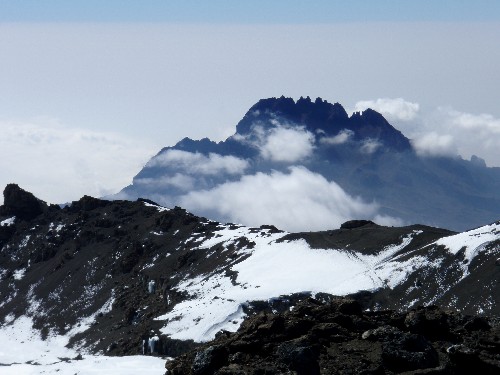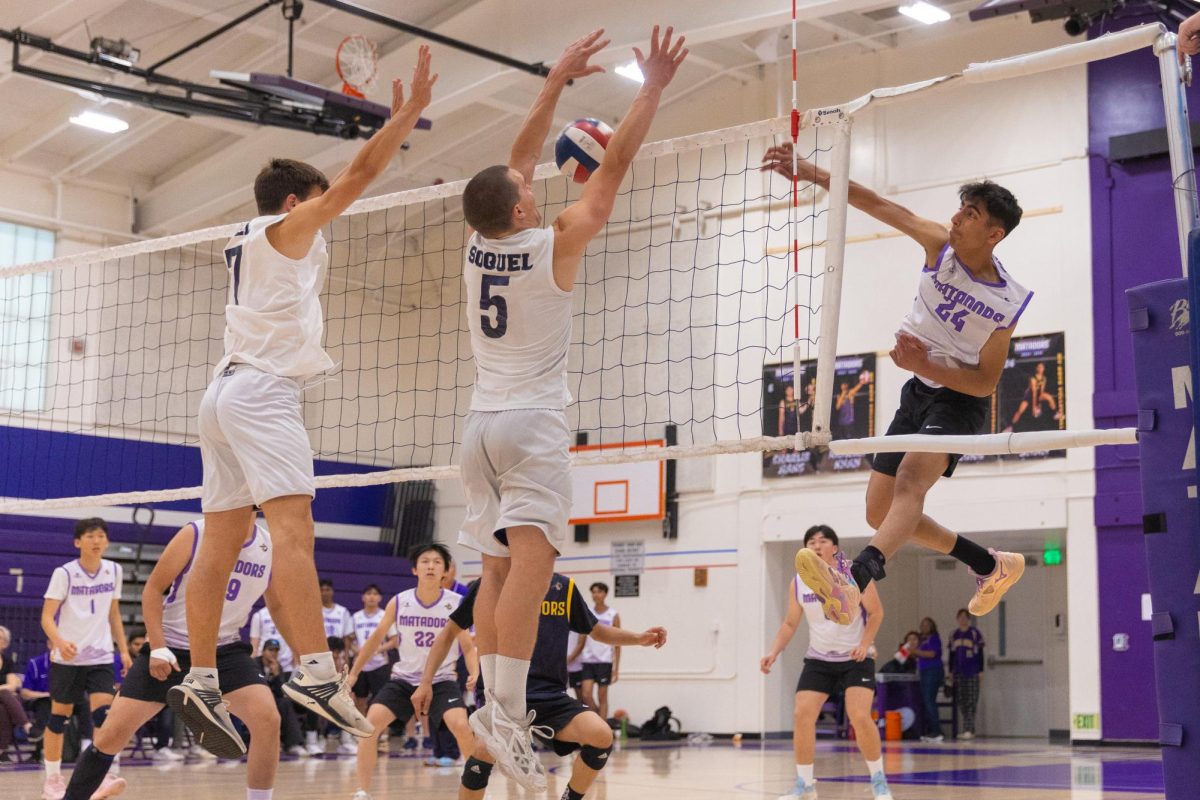Co-authored by Sandhya Kannan
Bruises. Infection. Paralysis. Death. As a climber, these are four risks among several others that constantly loom. The difference between a rock and a loose hedge could determine the difference between life or death, and the spontaneity of Mother Nature is not always the kindest of elements, and yet the choice to keep climbing– to reach the top, to take one last step– is one that many outdoor climbers risk their lives to take.
“The woman who climbed with me on Kilimanjaro accompanied me on Mount Shasta, and we were climbing when a boulder fell out of nowhere and hit her in the chest, killing her almost immediately,” said math teacher Jon Stark as he recounted his early adventures as a climber. “I’ve seen friends die in front of my eyes, but I still climb. It’s all about managing the risks.”
As an outdoor climber, the uncertainty of terrain and the high variability in weather conditions can be one among many difficult risks that can be fatal. Depending on the region and time of year, the sky can turn from light blue to an eerie gray in a matter of seconds, and dry weather can turn into a blizzard in a matter of seconds. Yet, despite knowing the risks, Stark cannot remember a time when he didn’t want to climb.
“The woman who climbed with me on Kilimanjaro accompanied me on Mount Shasta, and we were climbing when a boulder fell out of nowhere and hit her in the chest, killing her almost immediately,” said math teacher Jon Stark as he recounted his early adventures as a climber. “I’ve seen friends die in front of my eyes, but I still climb. It’s all about managing the risks.” -Jon Stark
“When I was a kid I always thought it was kind of a neat thing, and I always saw people climbing Mount Everest, and I always thought it was cool,” Stark said.
To him, it all goes back to managing the risks that climbing presents. In order to prevent injuries and fatality during a climb, he always takes the necessary safety protocols– climbing with a competent partner being one of the most important to him.
“I never travel alone,” Stark said. “I live by the rule that if I’m climbing, it will always be with someone else. The risk of climbing alone does not prove to be more or less thrilling, and it simply is not one I’m willing to take.”
Stark believes, however, that improving one’s level of competence at rock climbing begins- not outdoors, at Mount Everest- but right at home, in the gym.
“The best way to practice technical skill is in the gym, where nothing will come off,” Stark said, “But in the real world, you never know what will happen– a rock may fall out, or there may even be a snake in it, who knows.”
Zoom out of the map to see all the mountains Stark has climbed.
That isn’t to say indoor climbing is just a practice field, and doesn’t present the same thrills. Senior Haley Foladare, a member of Touchstone Climbing’s competitive team, evenly distributes her time for indoor and outdoor climbing, always practicing for one or the other.
“I wasn’t amazing to start with,” said Foladare. “But since I wasn’t scared of heights, I was able to quickly improve. then I worked pretty hard for the next few months, and grew really into it, and when you start out climbing, it’s really easy to get really, really good, and then you hit this point where you stop improving at the same rate, and then you have to work harder.”
Senior Sara Moore, also a climber with Touchstone Climbing, believes that even though she is very new to the sport, rock climbing has taught her many life lessons, and has helped her expand her comfort zone.
“It’s helped me grow as a person,” Moore said. “I’ve been able to break out of my barriers and try new things.”
Before taking up rock climbing as a sport, Moore was an avid soccer player, having started playing soccer from a very young age. Despite playing for the MVHS team and playing soccer after school, Moore feels she made the right decision to quit soccer and start climbing.
“It was a tough decision, giving up soccer,” Moore said, “but climbing, despite its initial challenges, has presented a thrill and happiness that I didn’t find in the other sport, so there are no regrets.”
Whether it is trekking up the Alps or planning the next step up a boulder, the three climbers all shared one piece of advice: it is vital to have the ability to put aside any fears of falling in order to see progress.
“It’s just like in life, I suppose,” Stark said, “you need to fall in order to figure out how you’re going to get to the top. But when you do, the view and the feeling is like nothing short of impeccable.”









